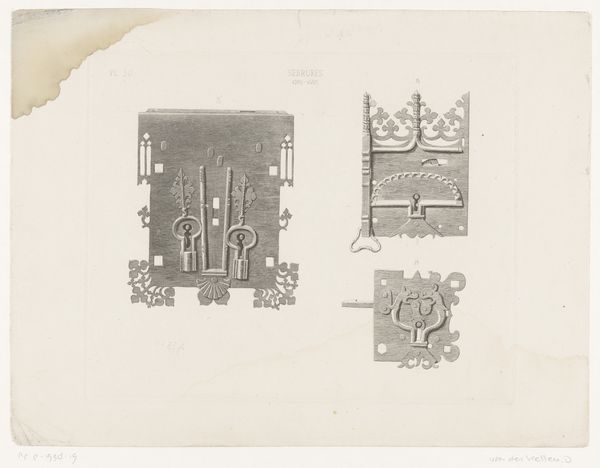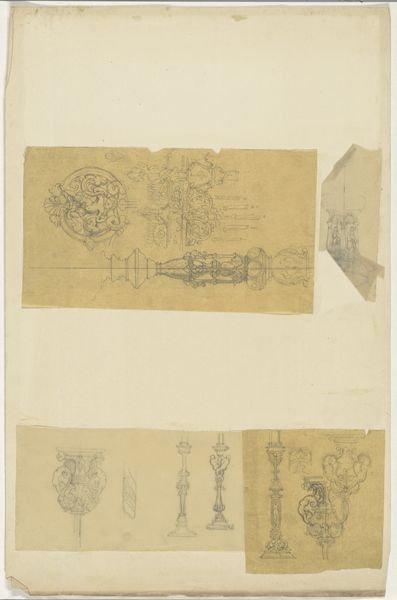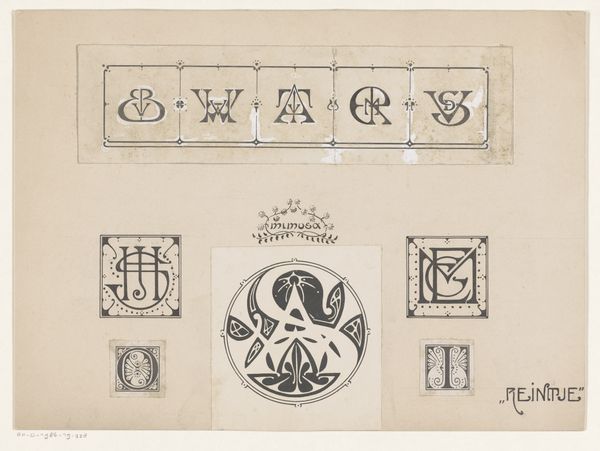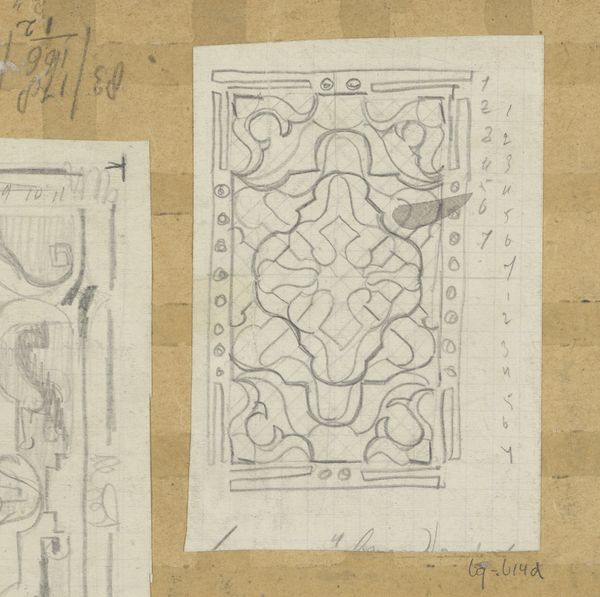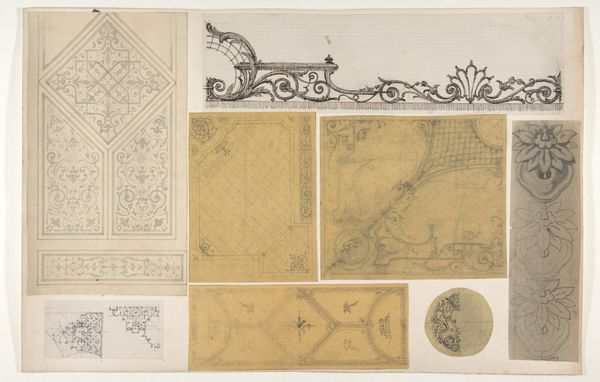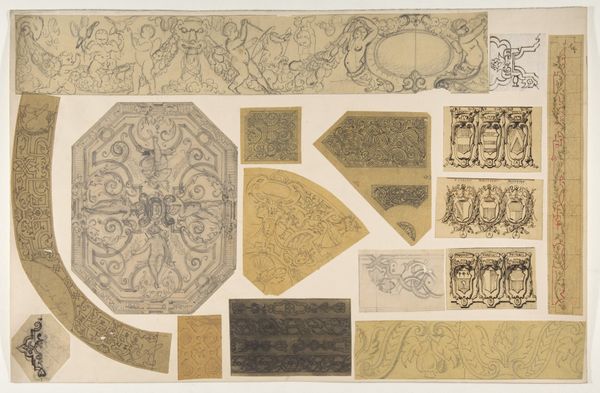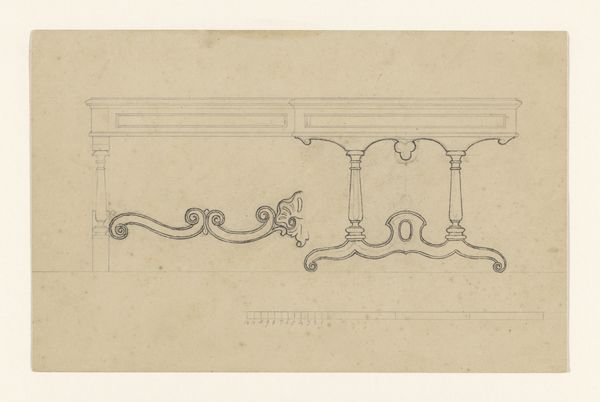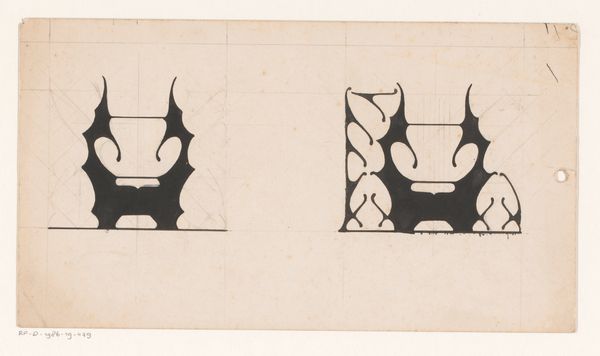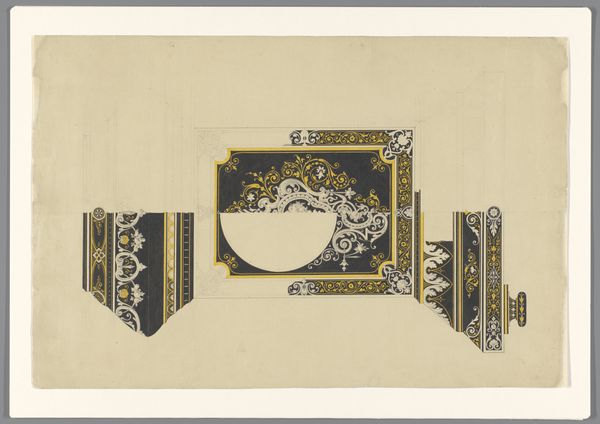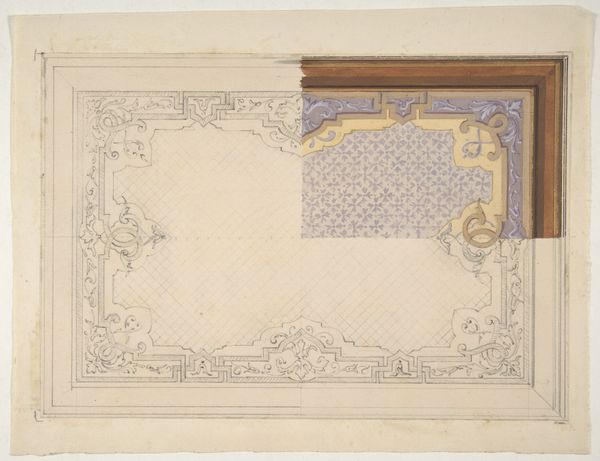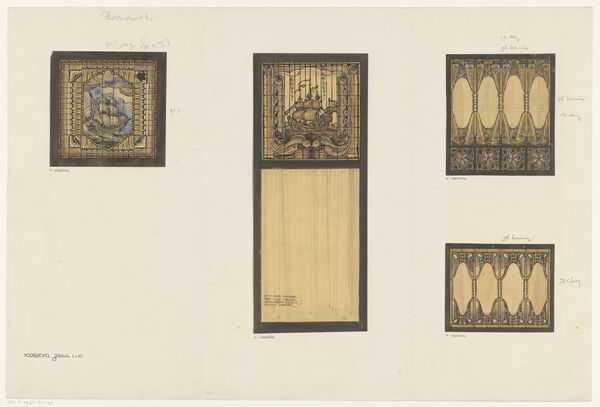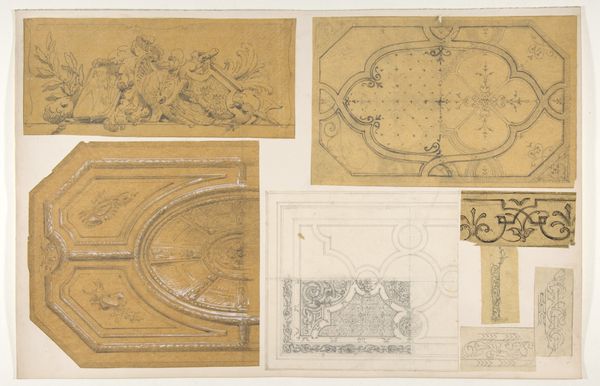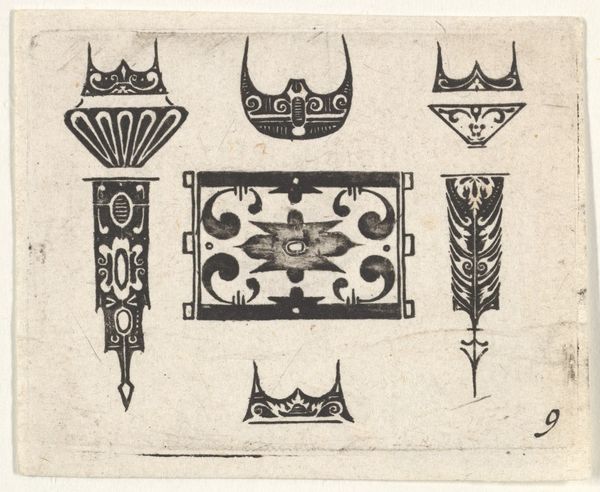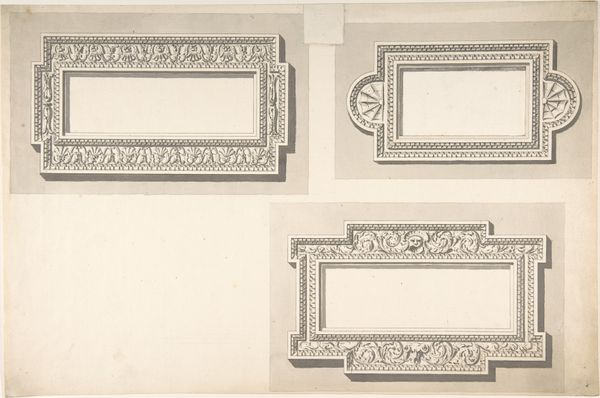
drawing, print, etching
#
drawing
#
neoclacissism
# print
#
etching
#
etching
#
form
#
decorative-art
Dimensions: height 272 mm, width 390 mm
Copyright: Rijks Museum: Open Domain
Luigi Valadier made this drawing for handles with pen and brown ink, heightened with yellow, in eighteenth-century Italy. The drawing shows various ornate Neo-Classical handle designs. What do these designs tell us about the role of the artist and the status of art at the time? Valadier was a silversmith, goldsmith and bronze worker, who came from a family of artists. The artist was, first and foremost, a craftsman who was commissioned to produce decorative objects for wealthy patrons who decorated their houses in the Neo-Classical style. These designs incorporate classical motifs such as Greek keys, garlands, and classical heads. Although the term didn't yet exist, Valadier’s designs were part of the visual language of a rising class of entrepreneurs and industrialists, who sought to give the impression of wealth and power. If you want to explore the economic and social history of art further, look at archival sources such as business records, inventories, and letters. You might be surprised at what you find!
Comments
No comments
Be the first to comment and join the conversation on the ultimate creative platform.
